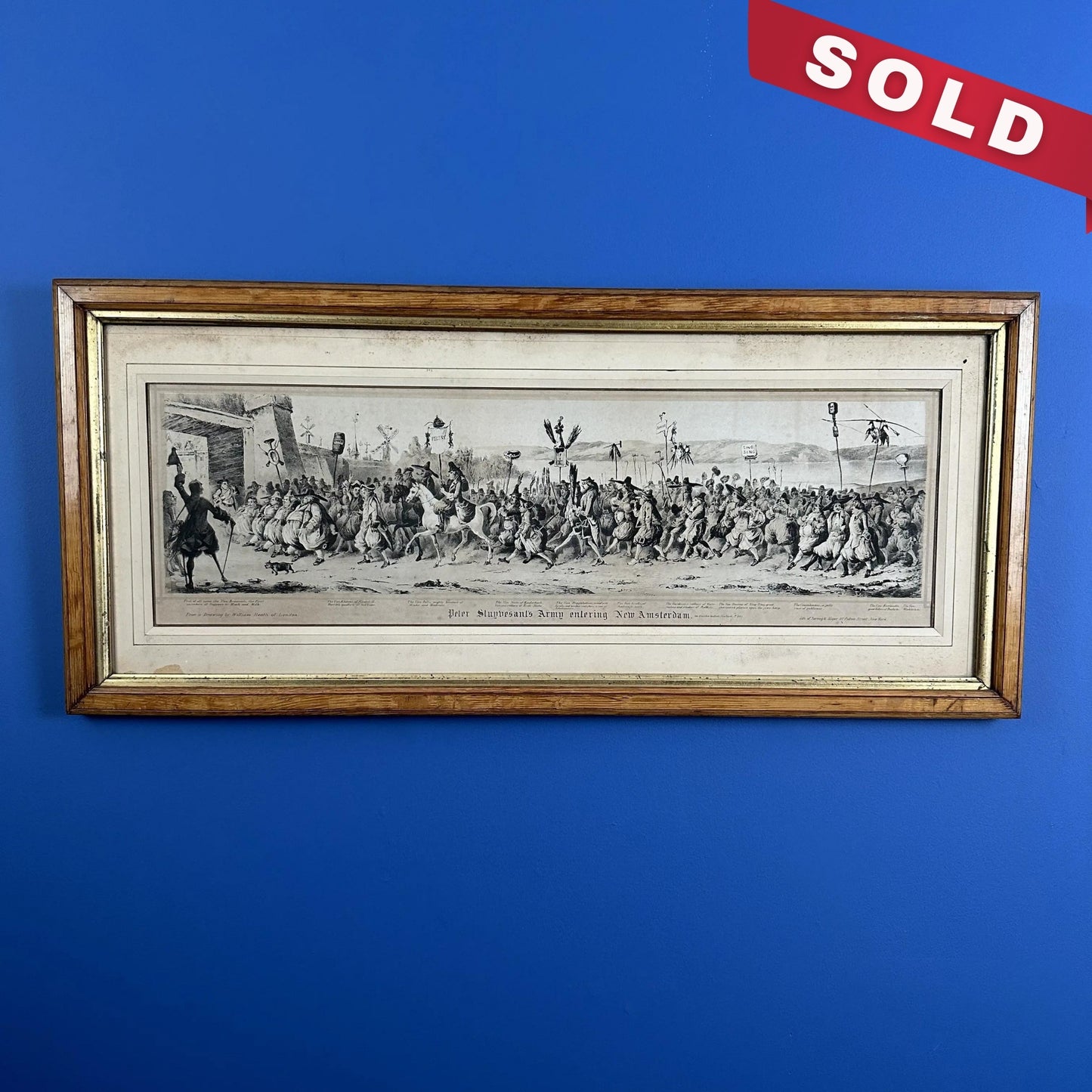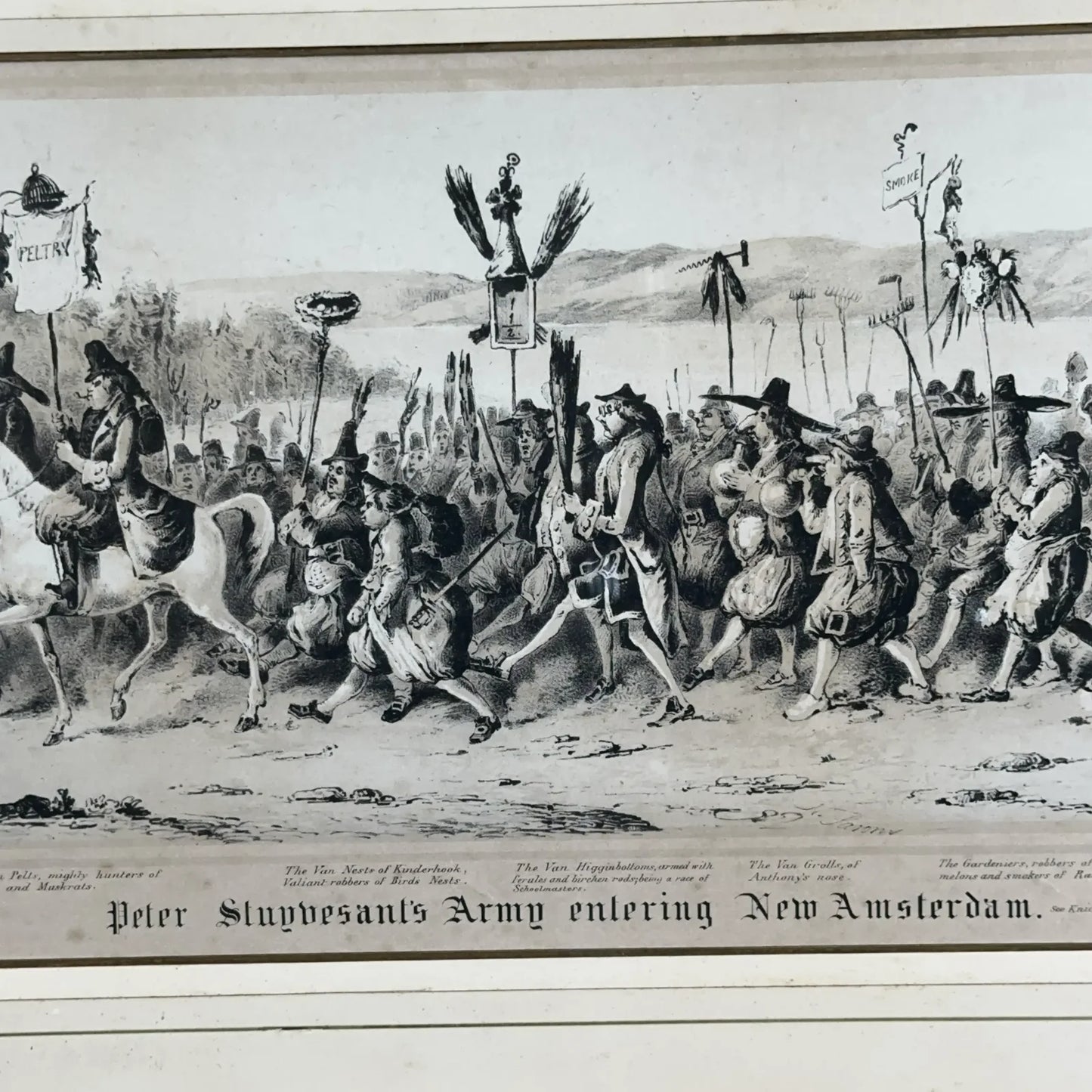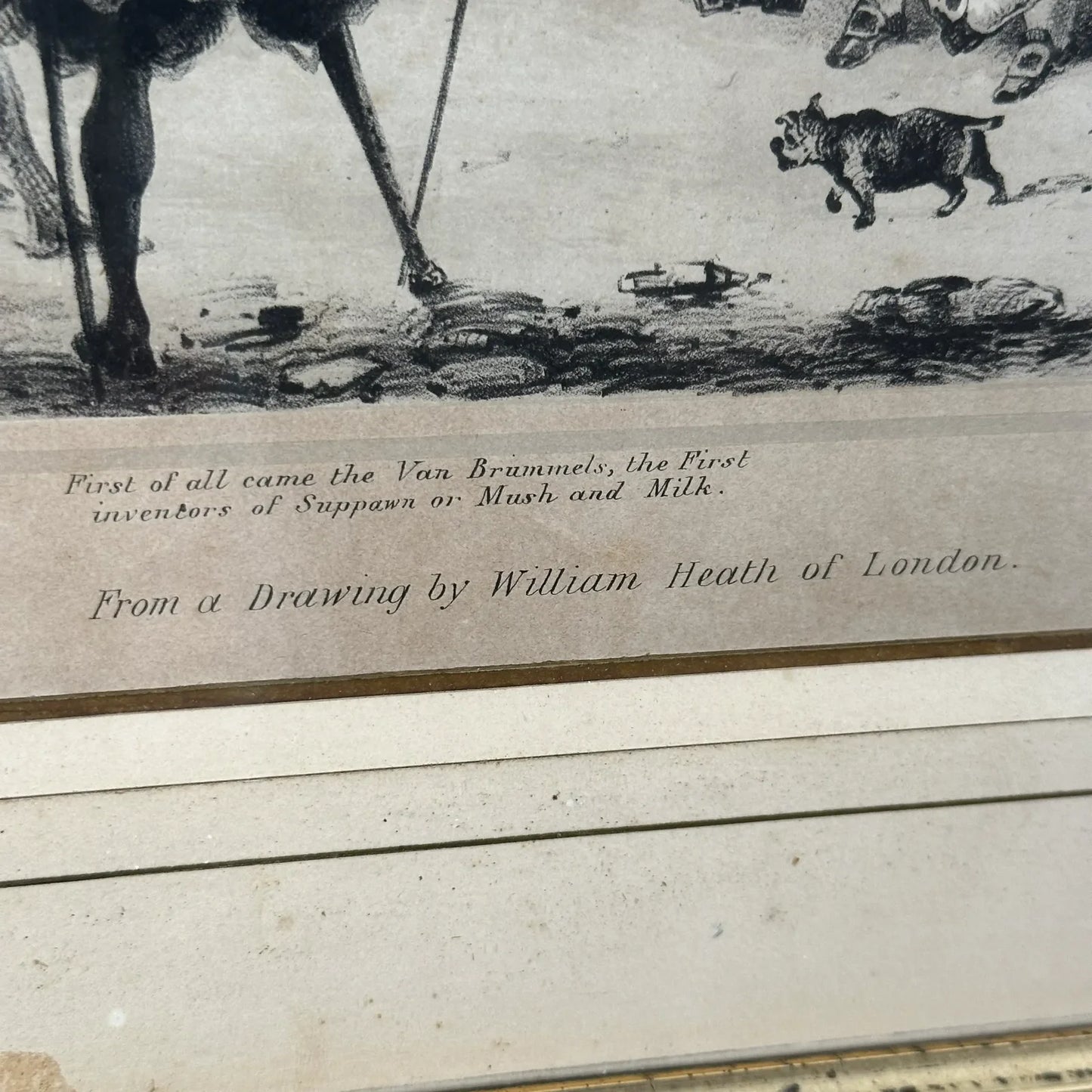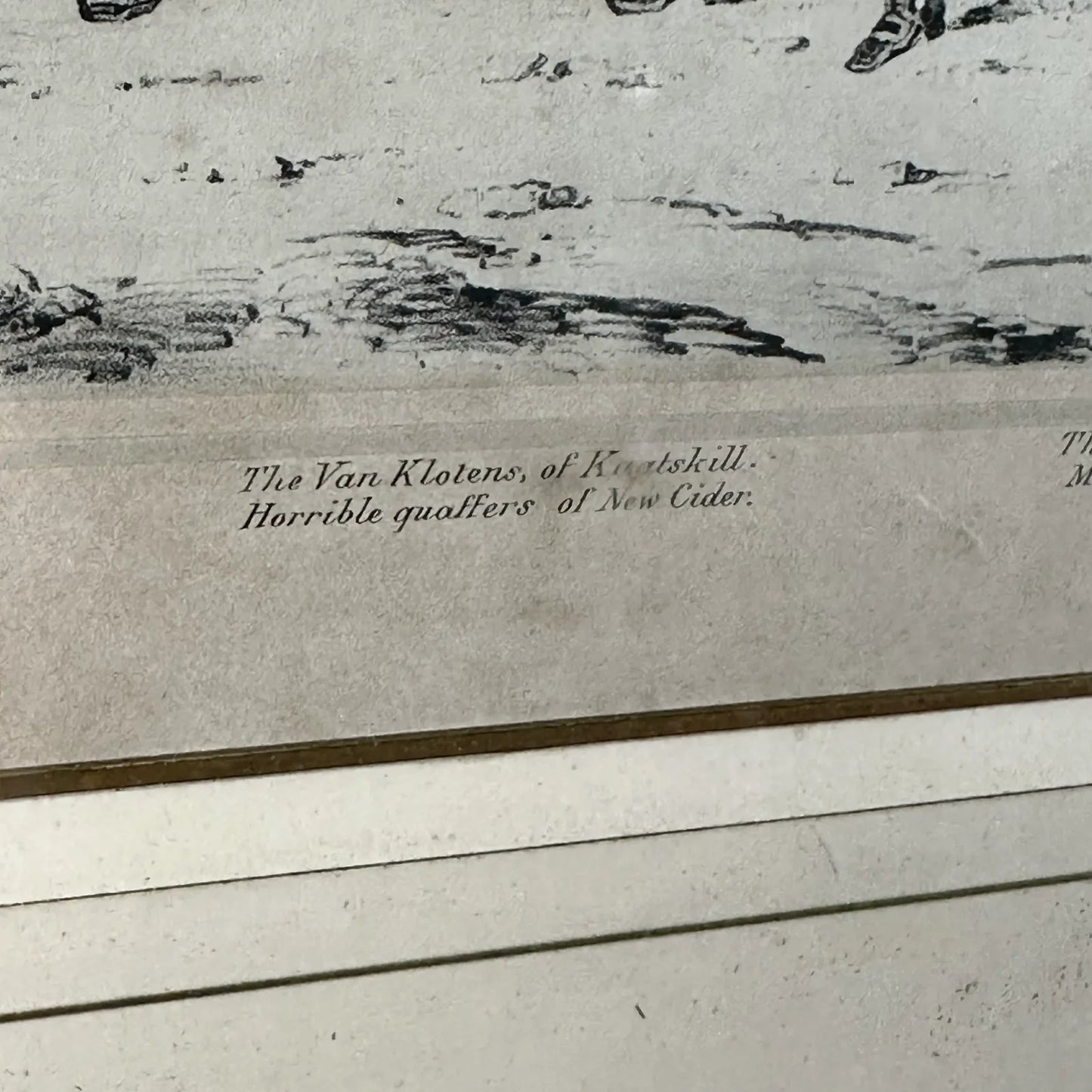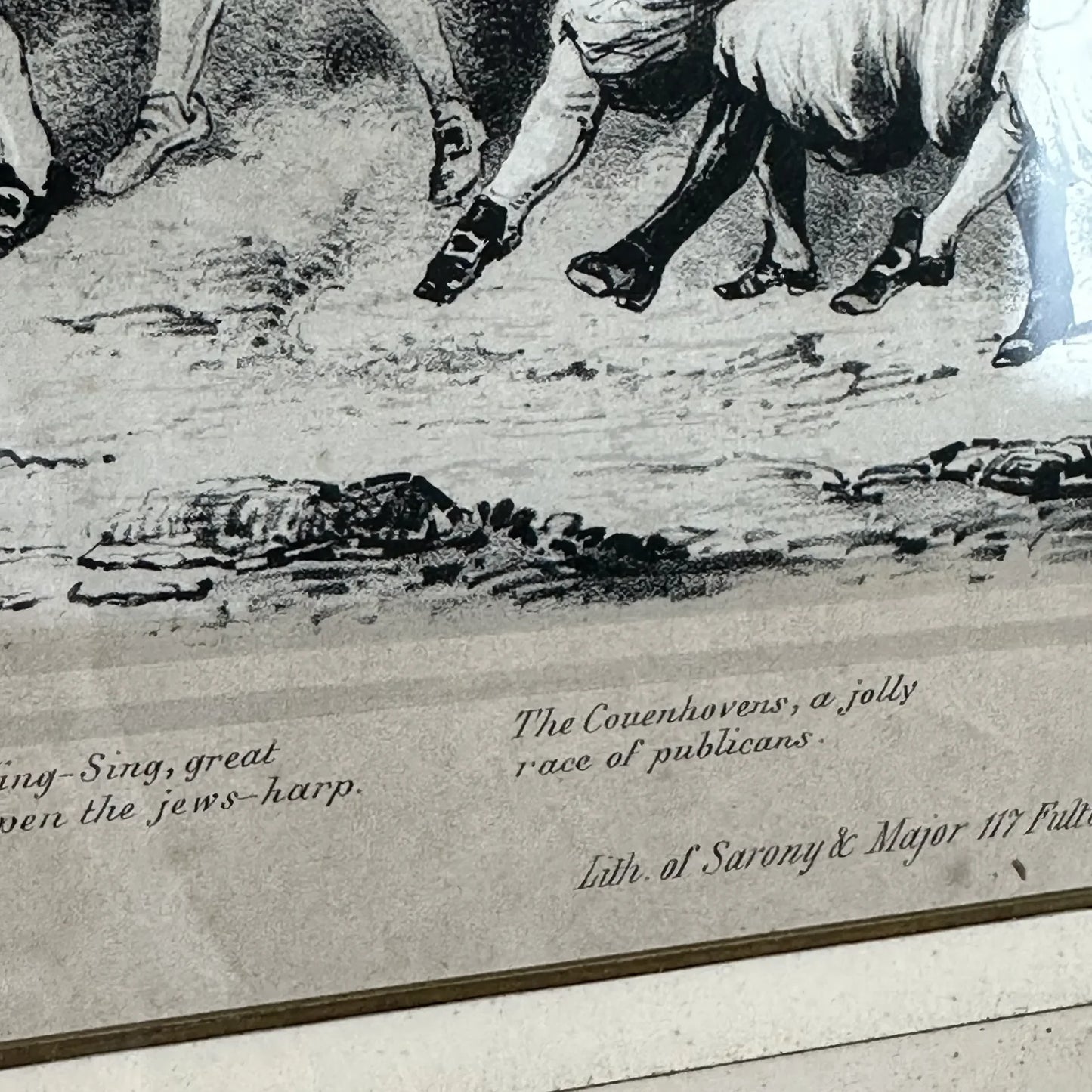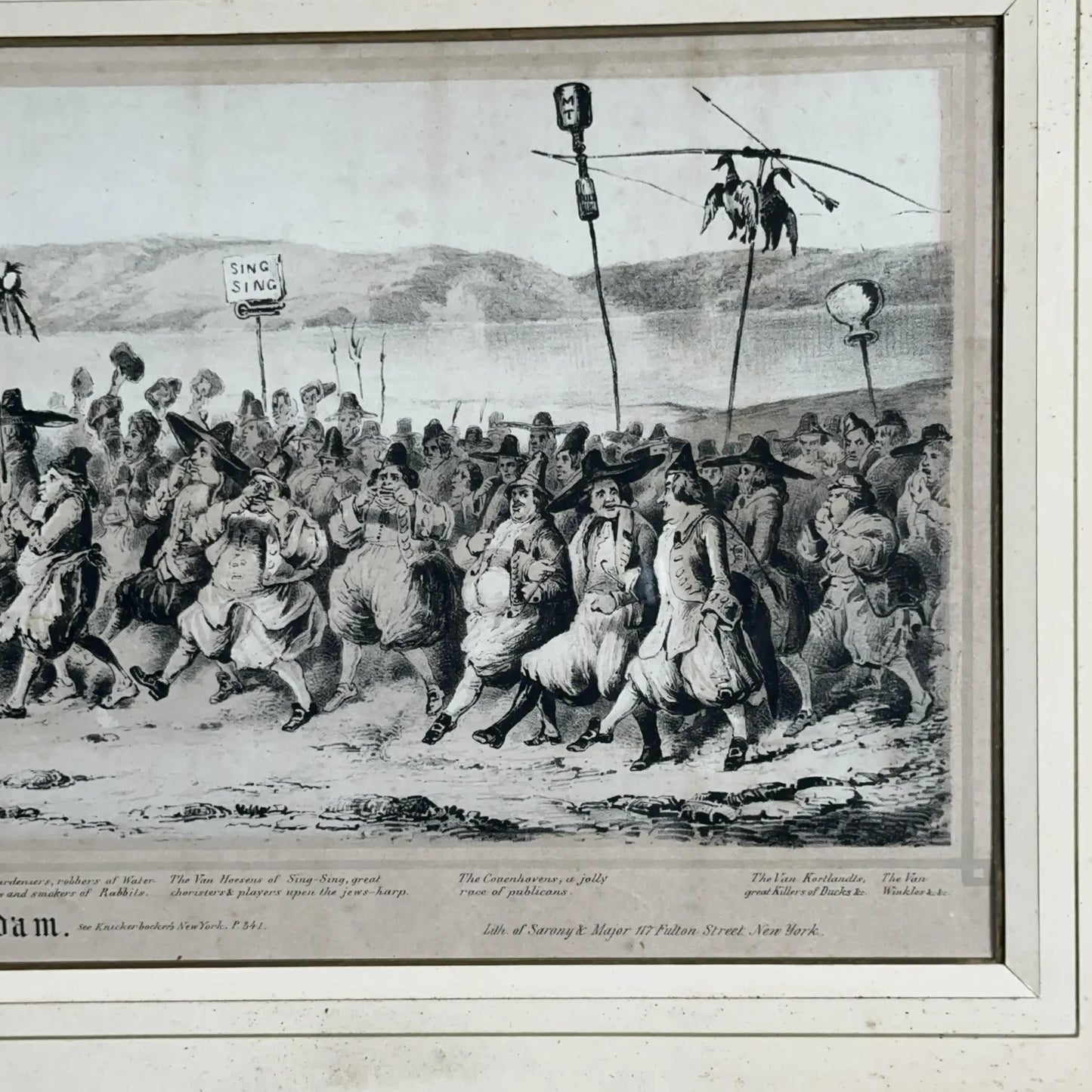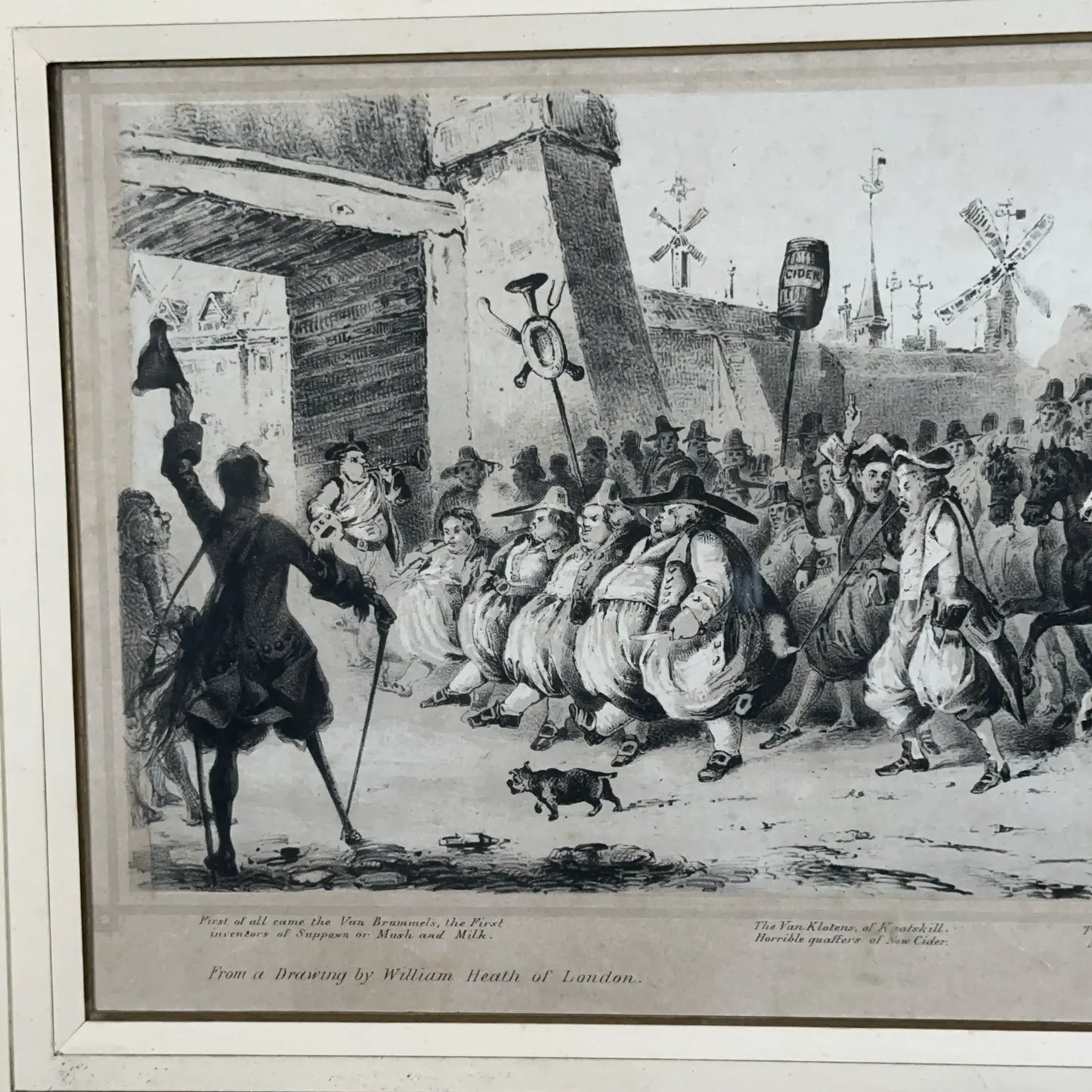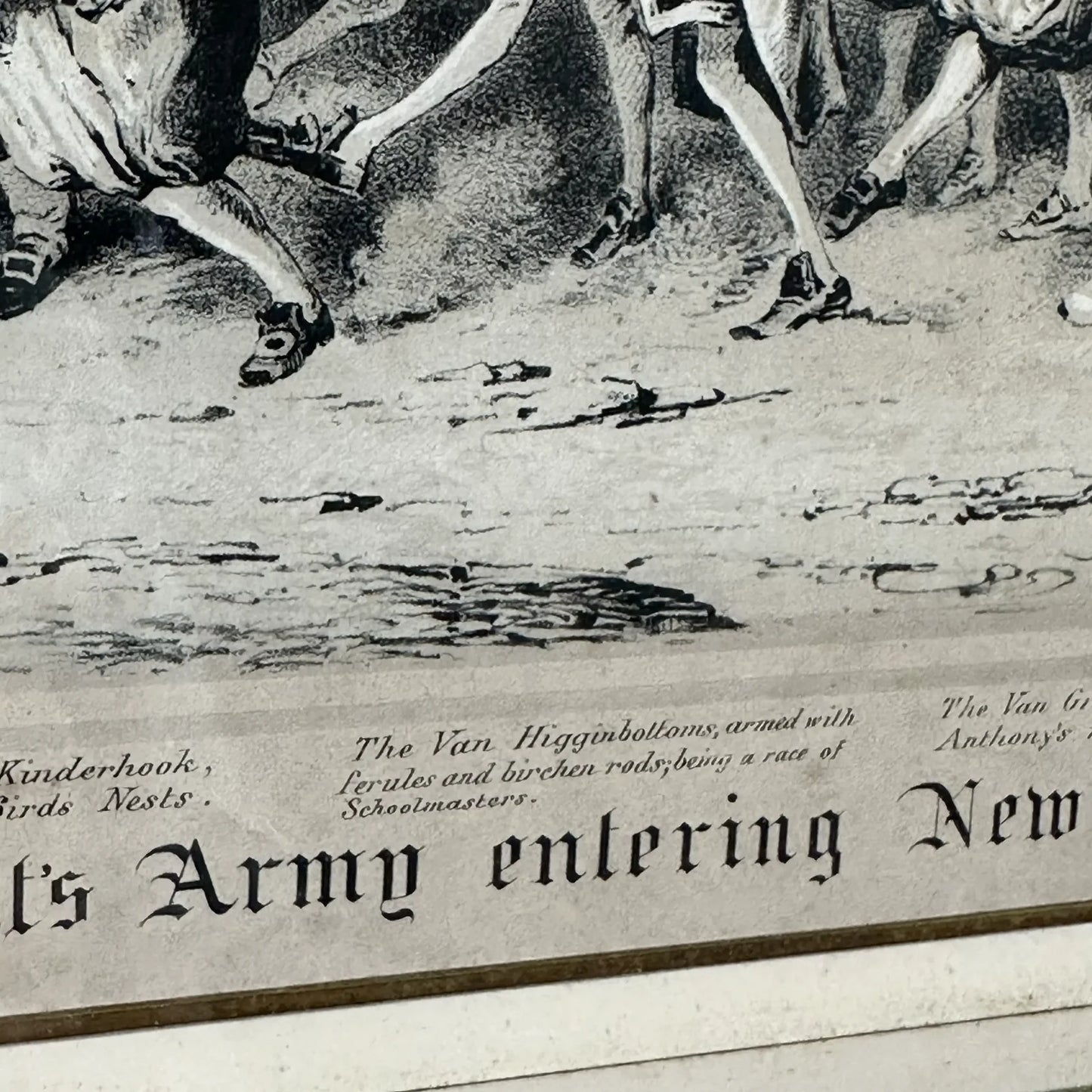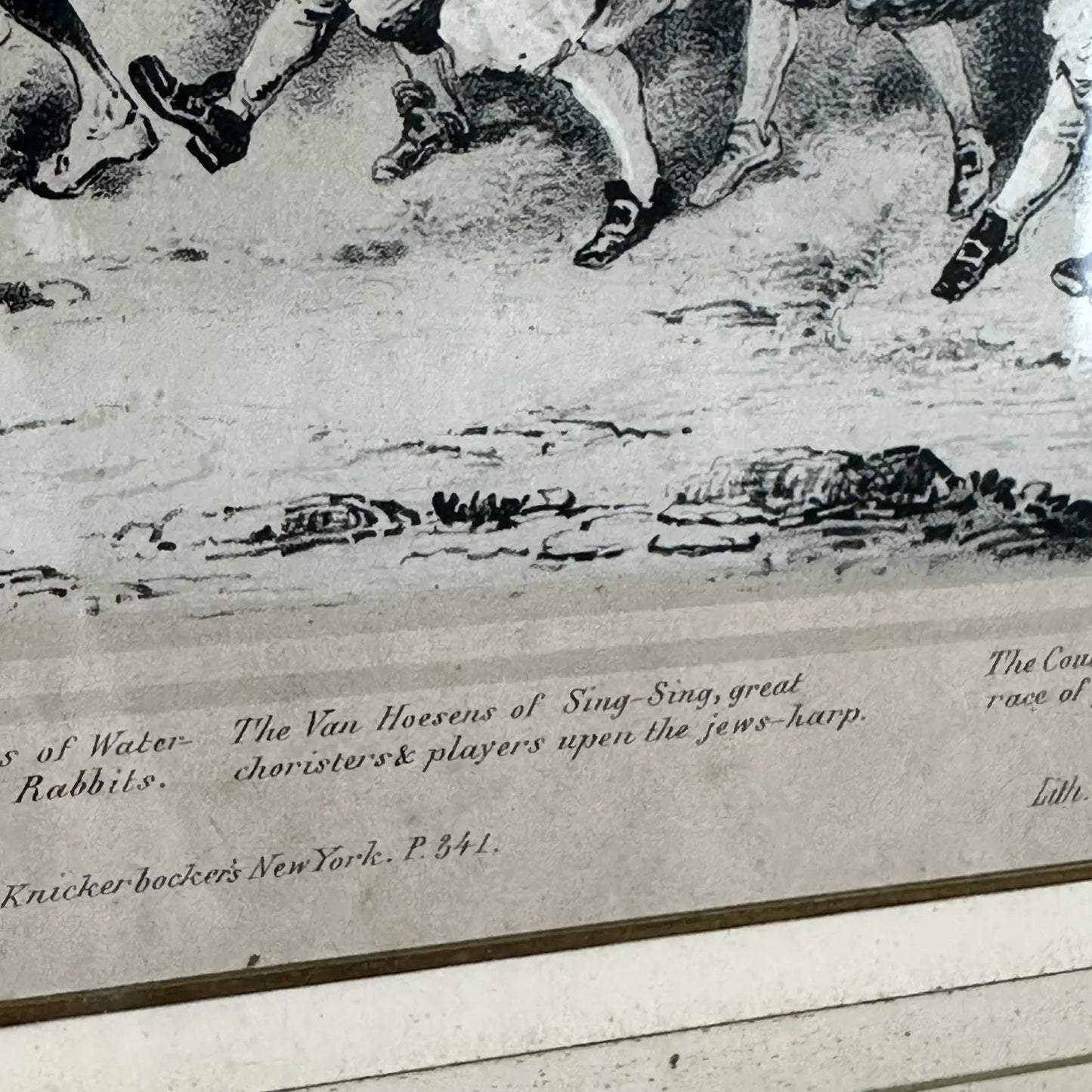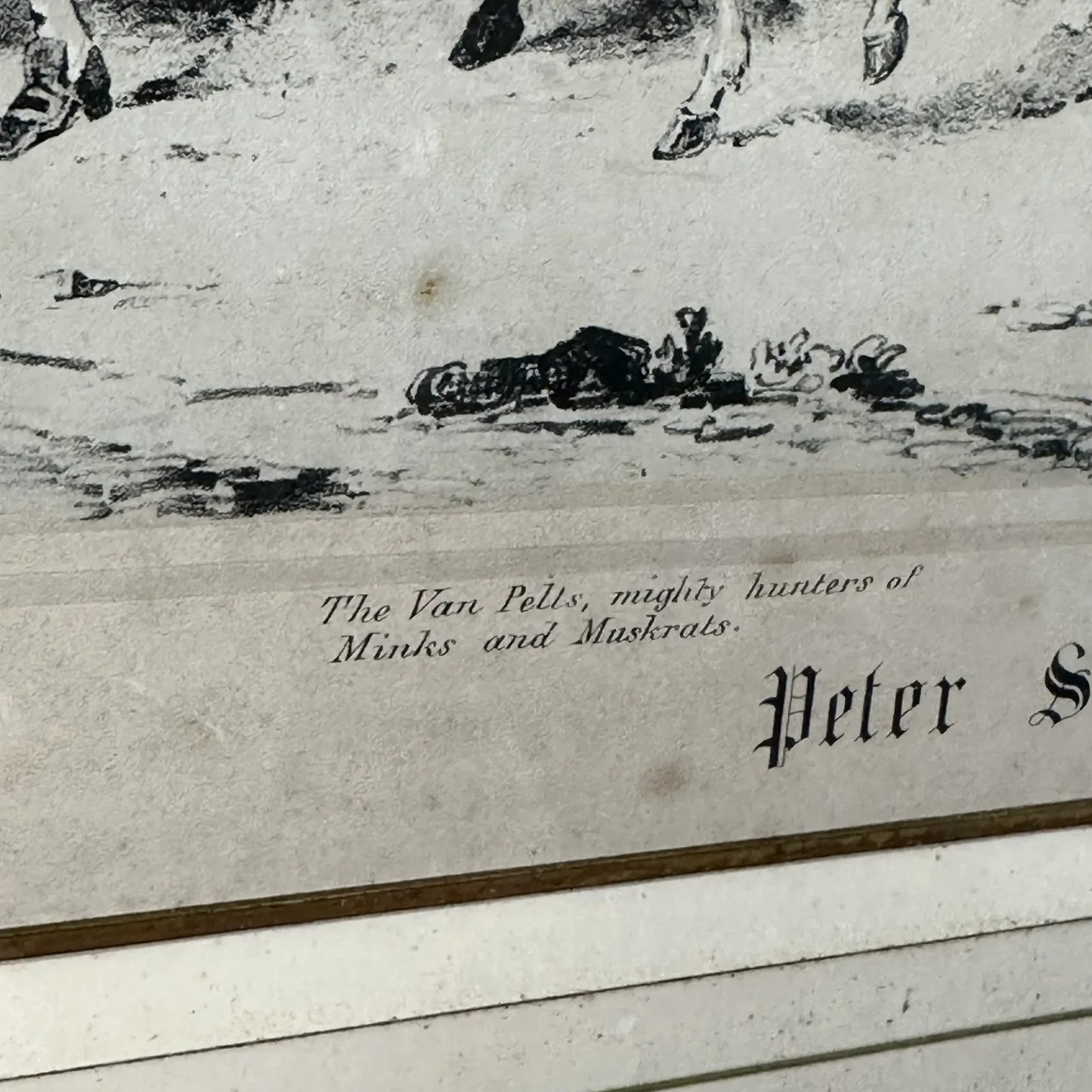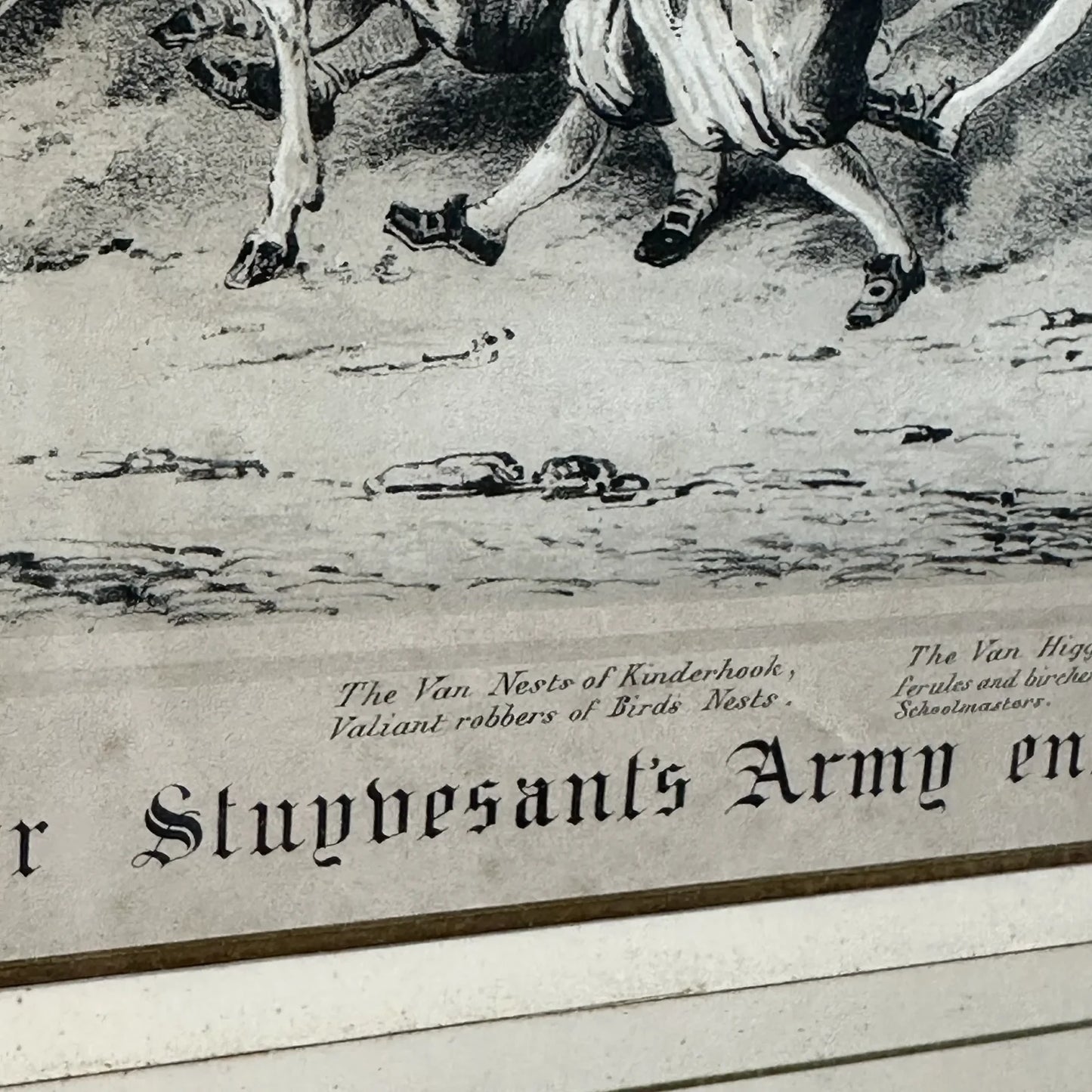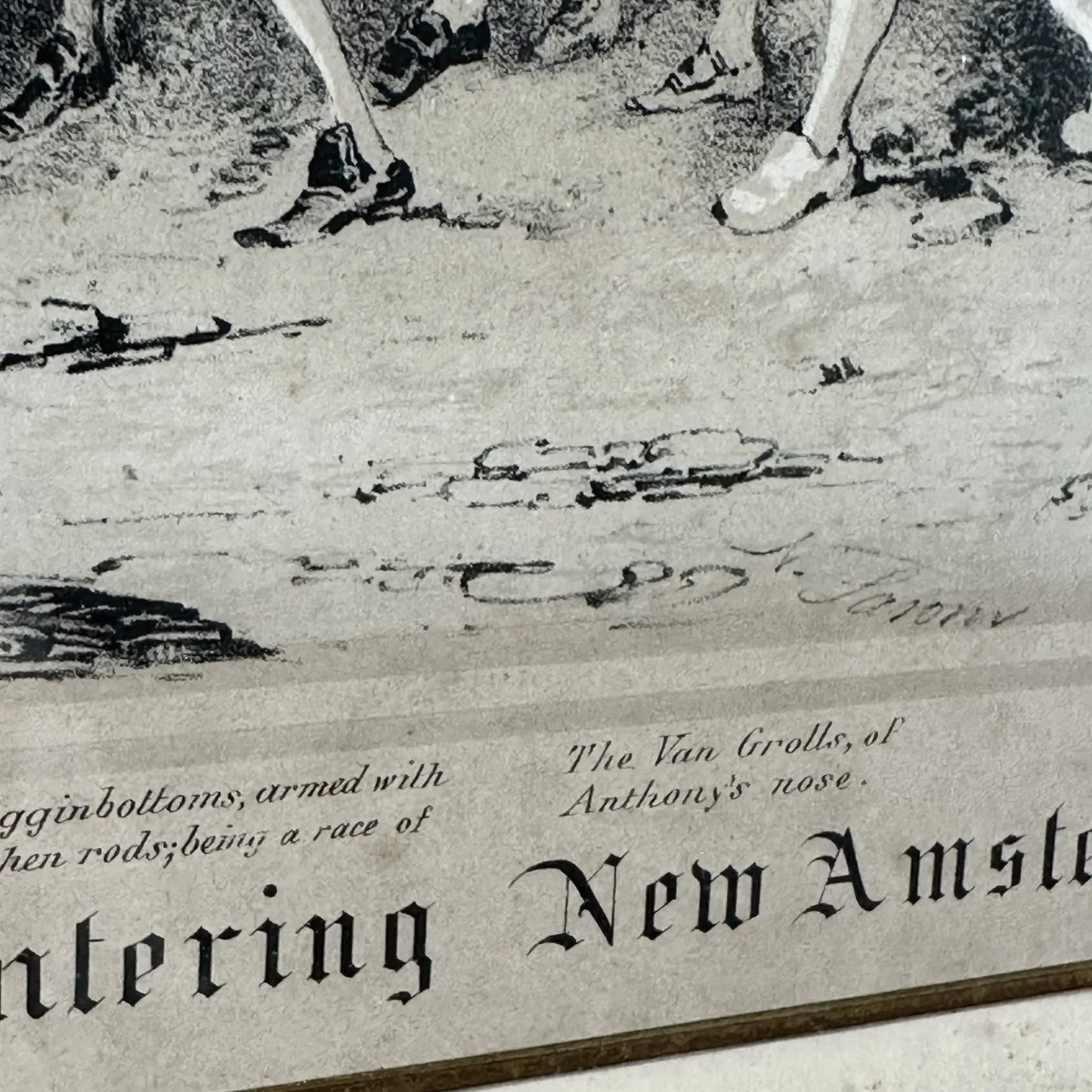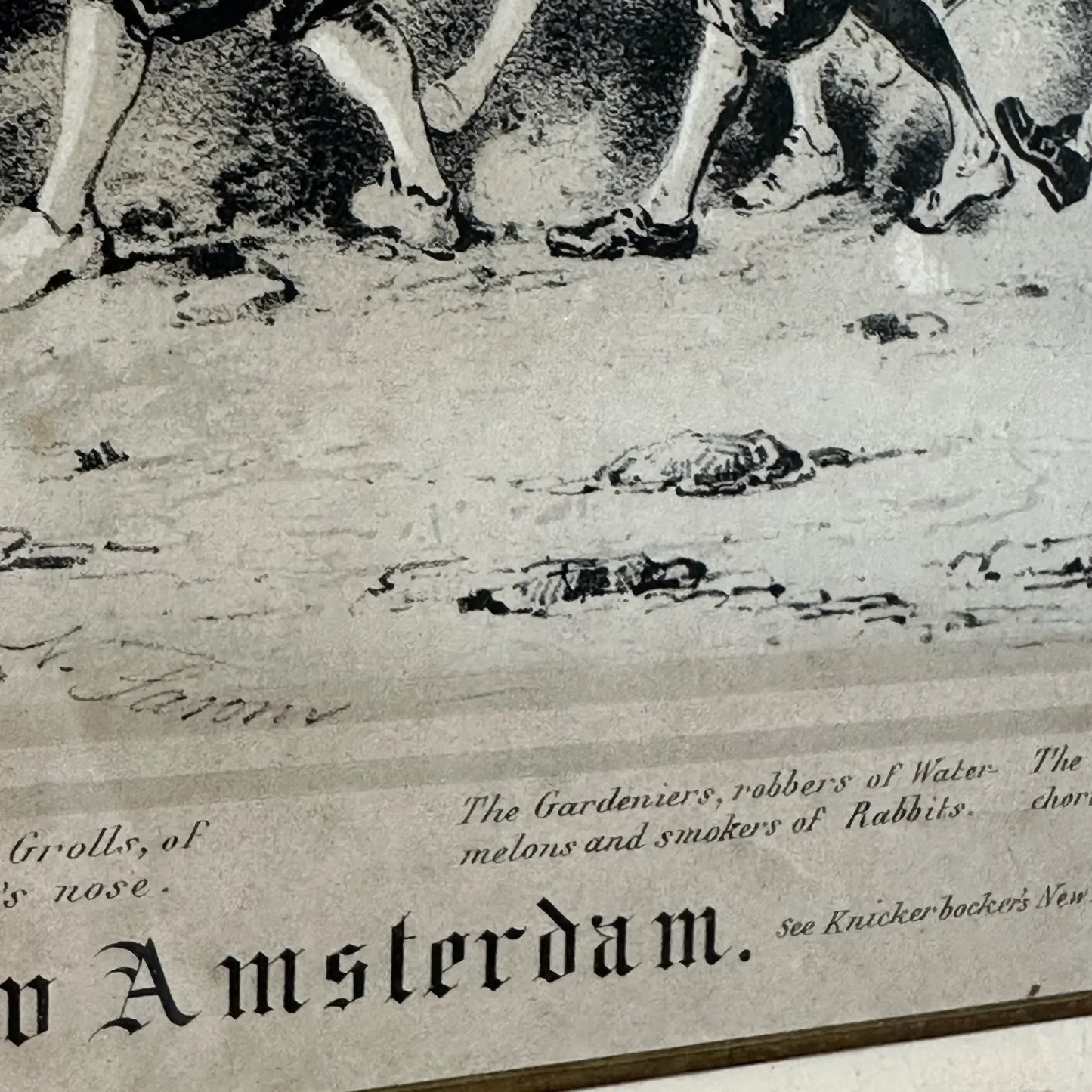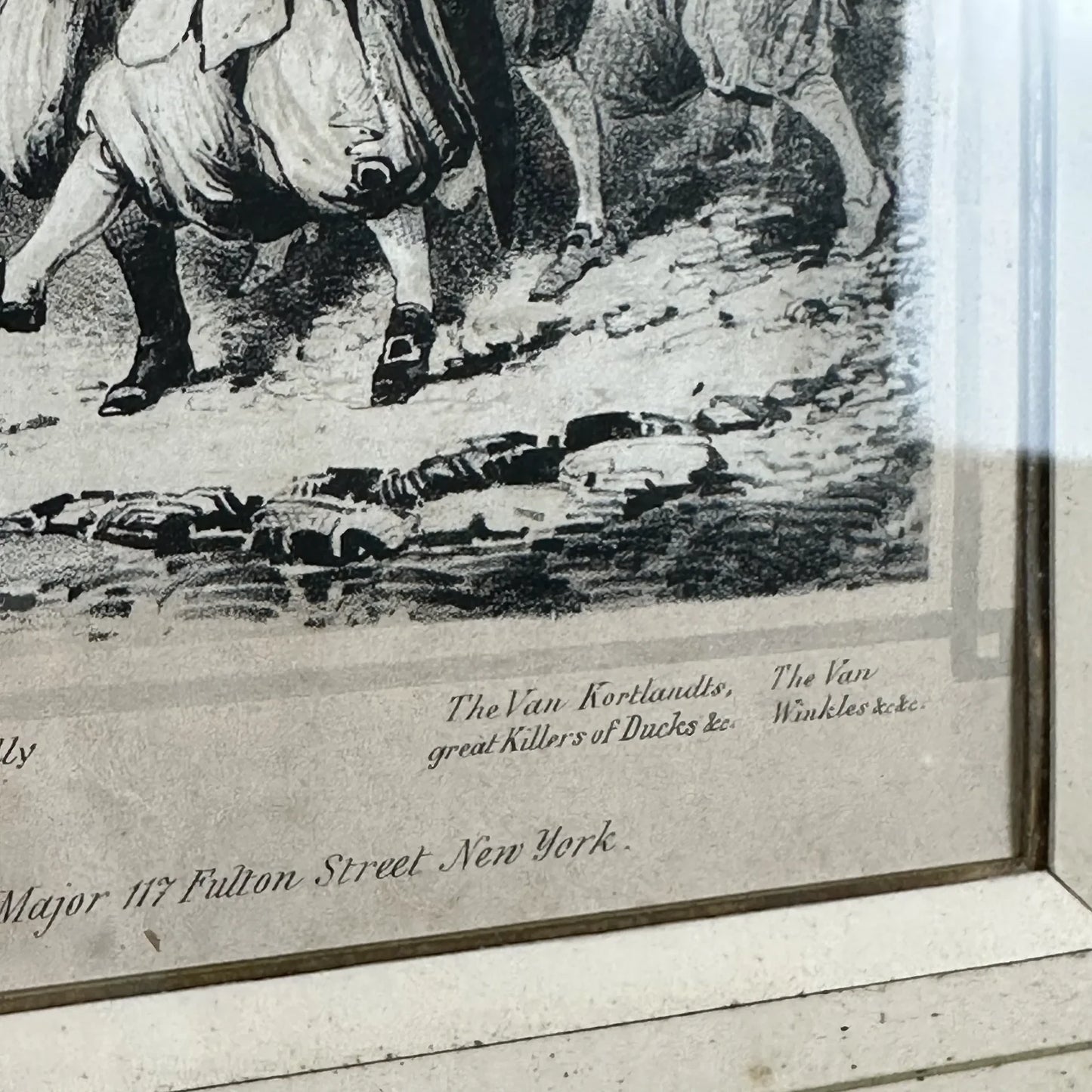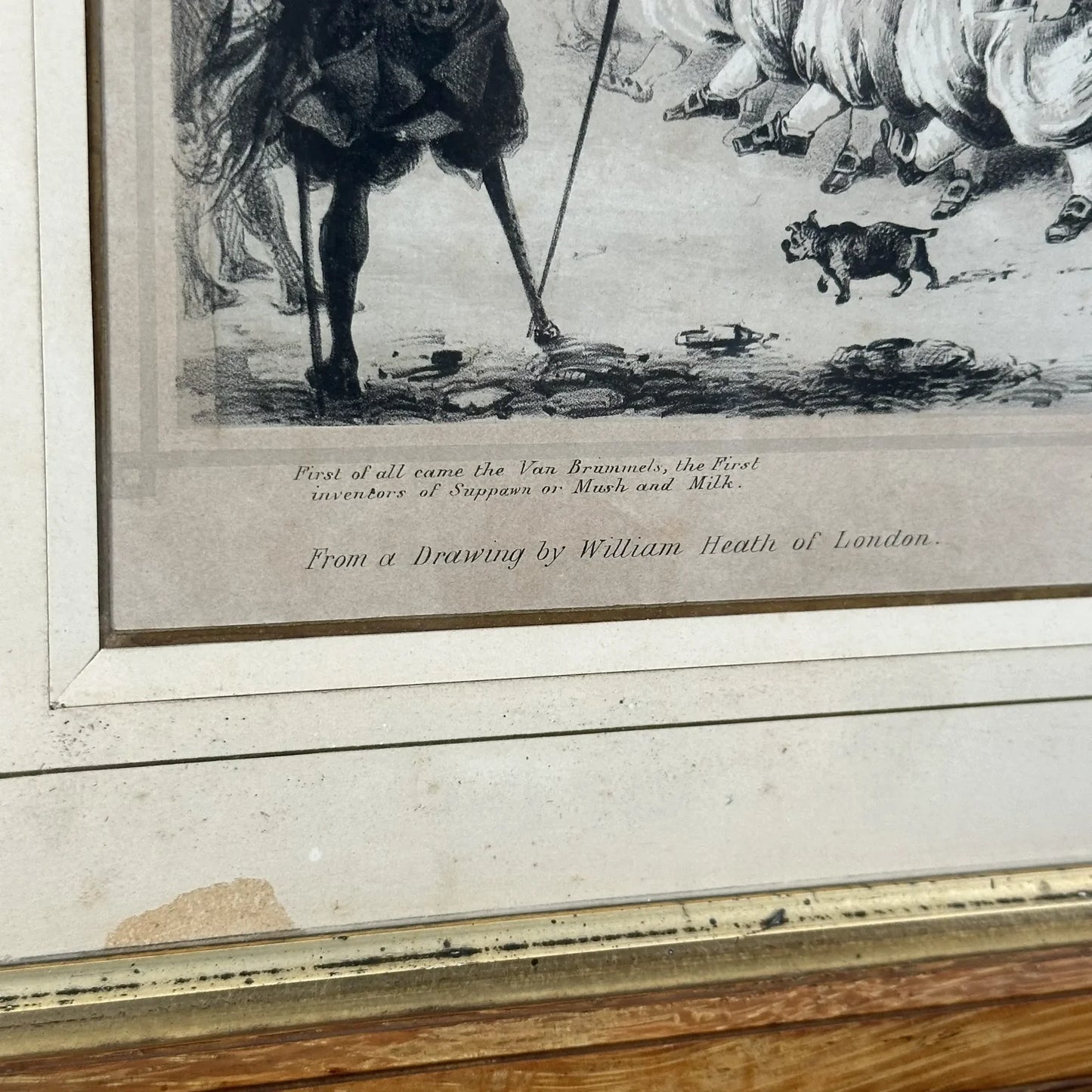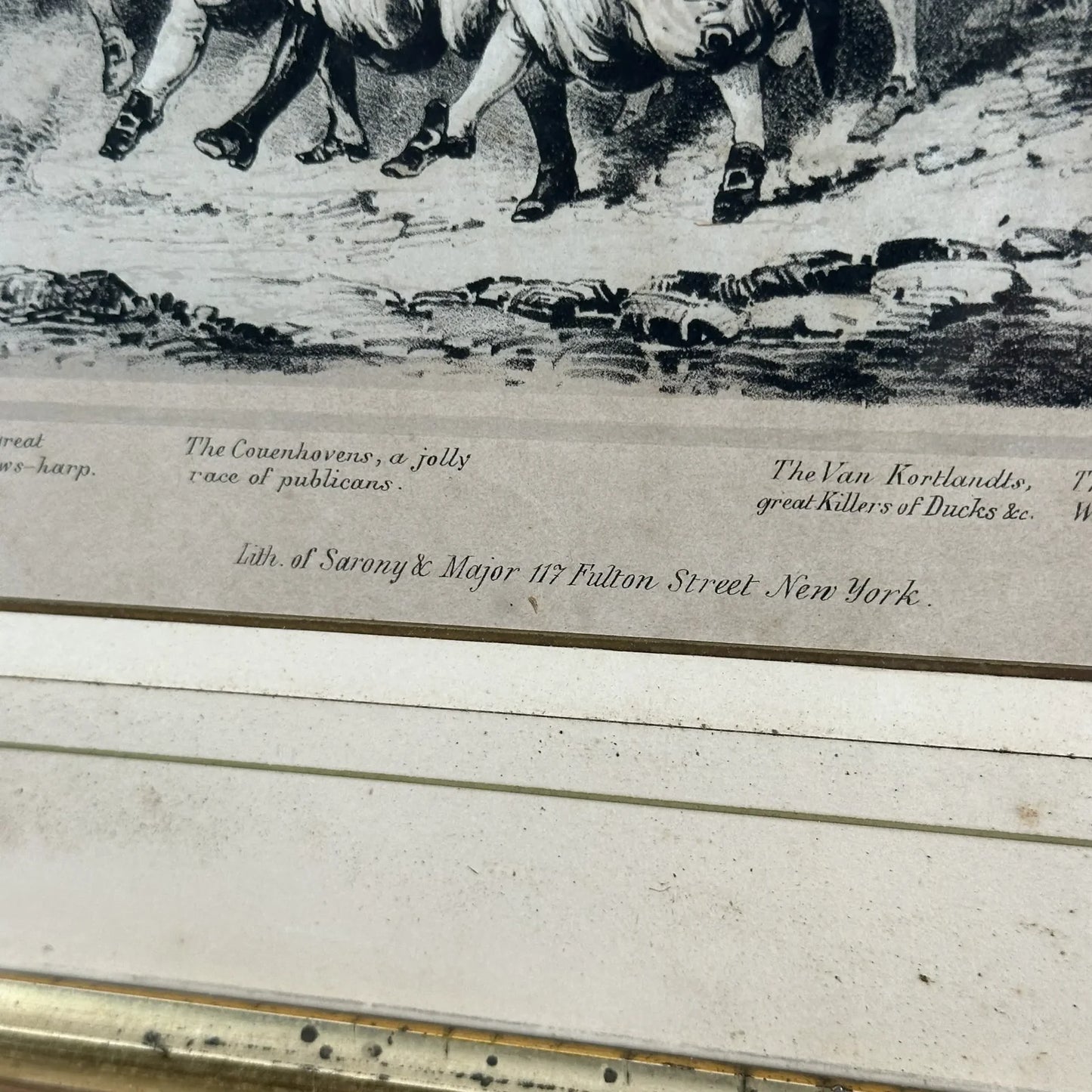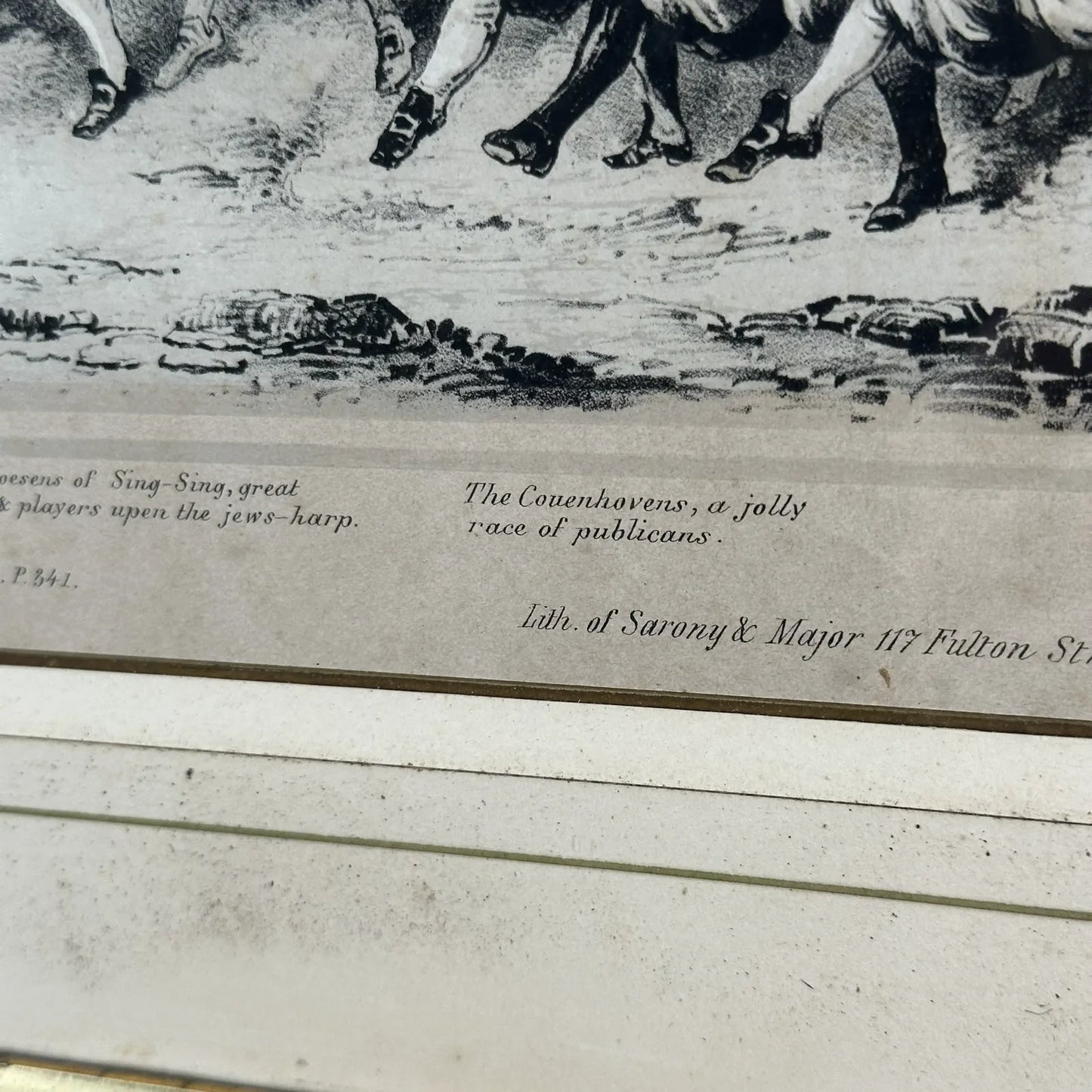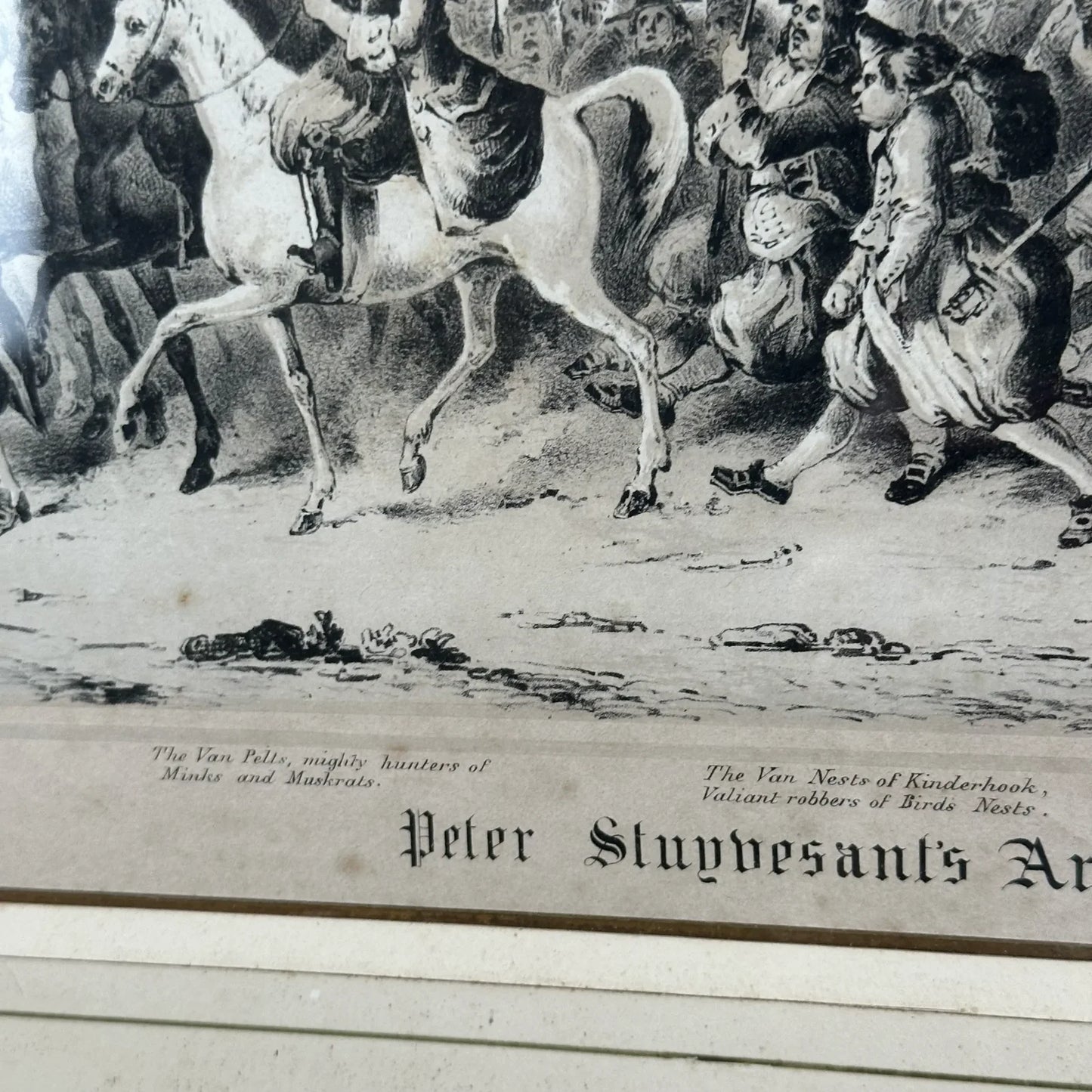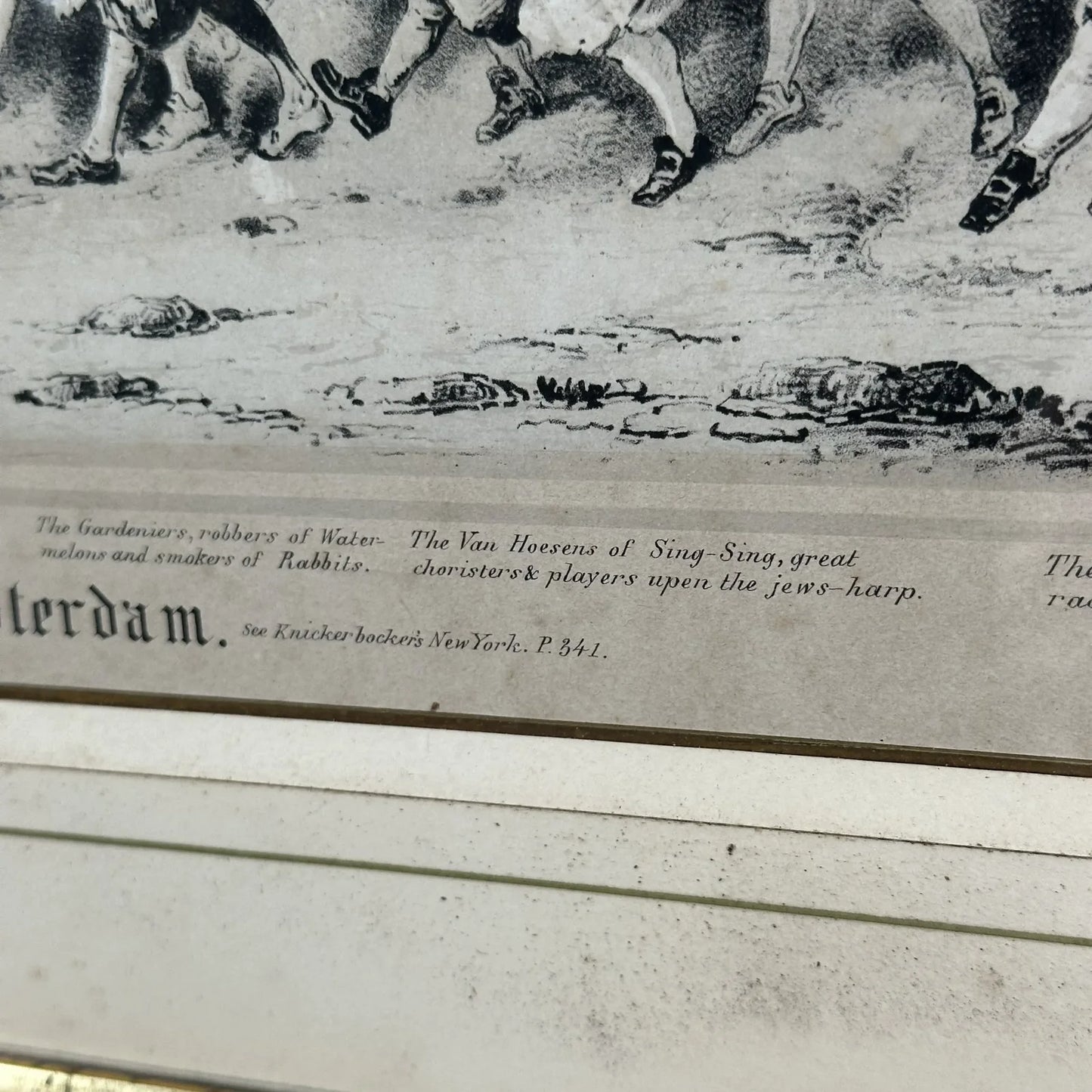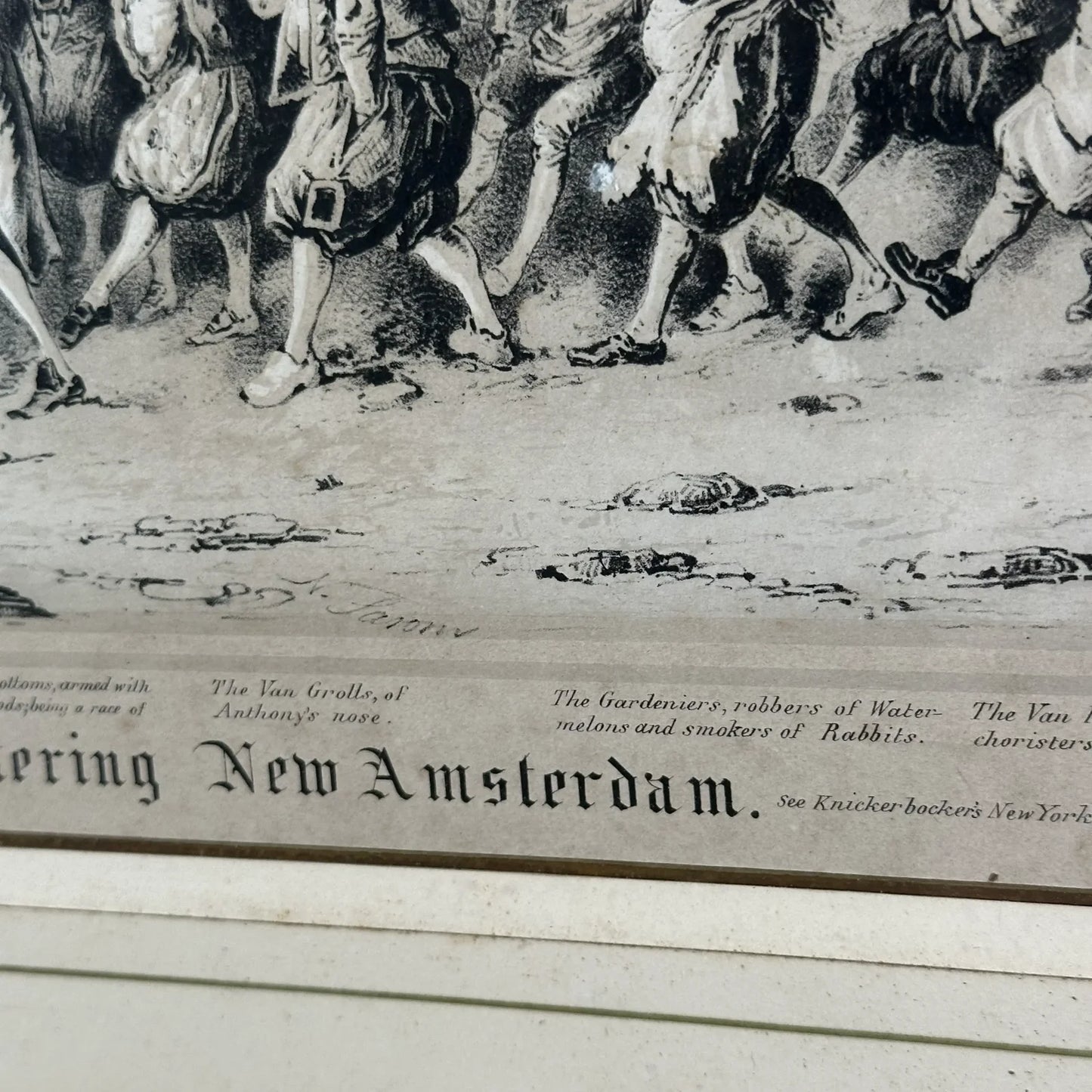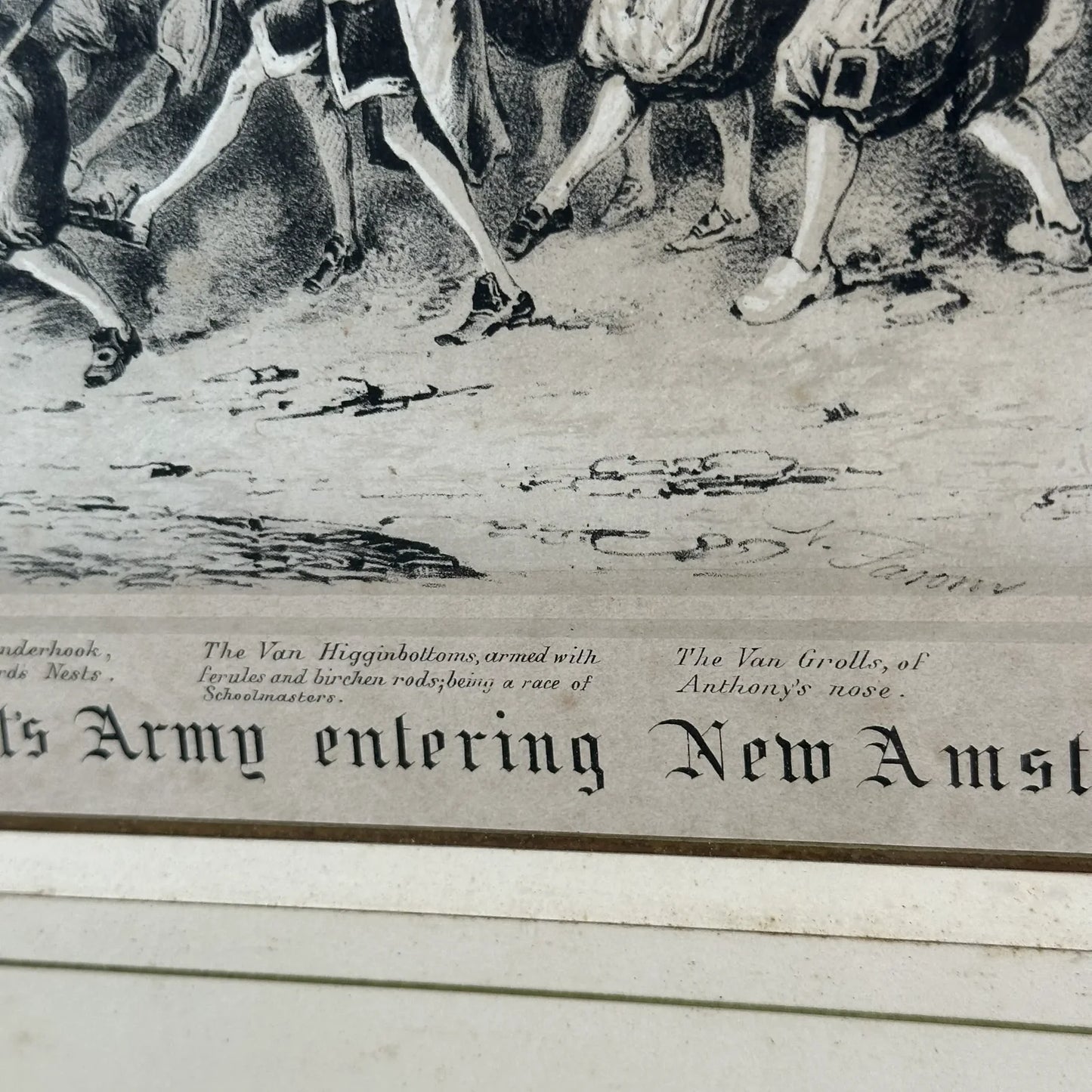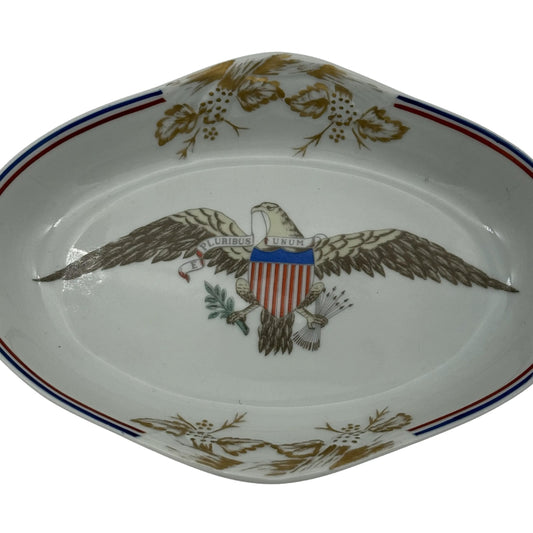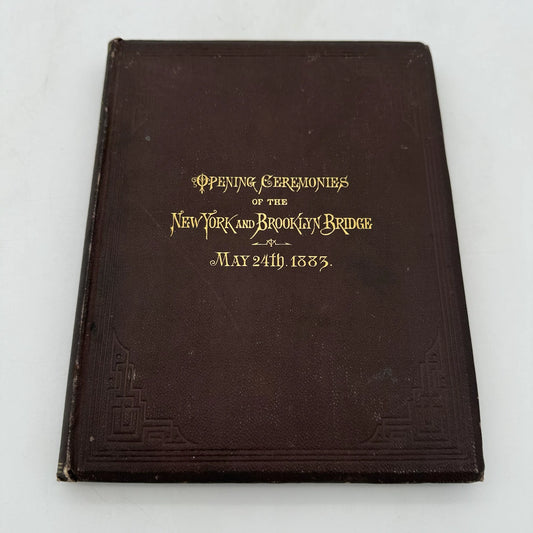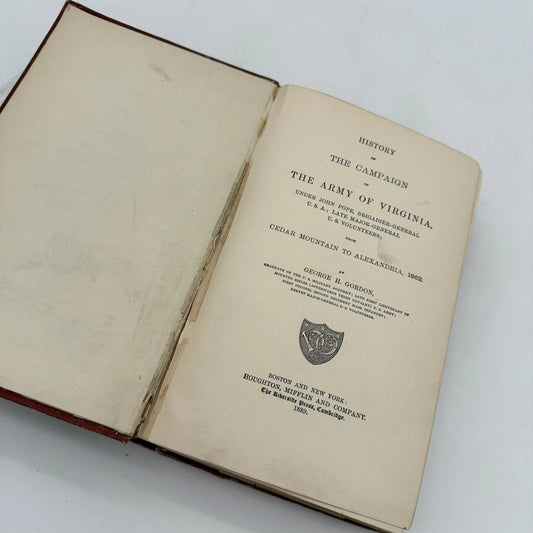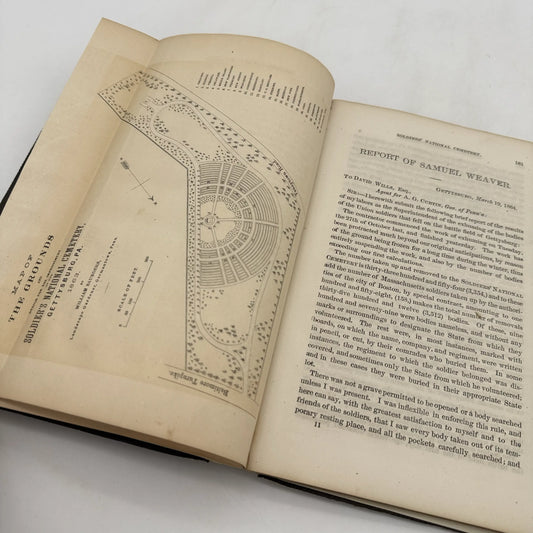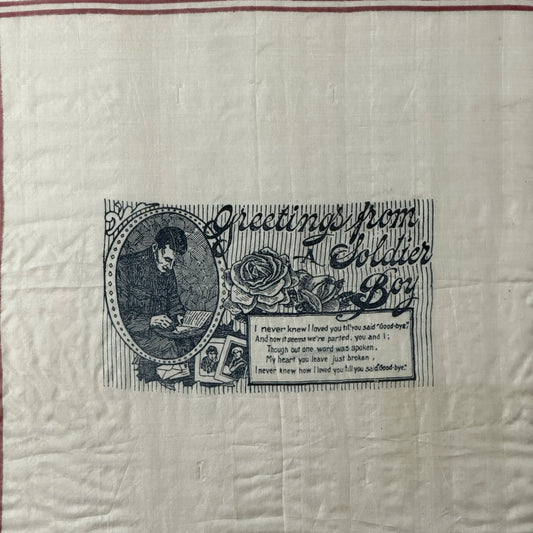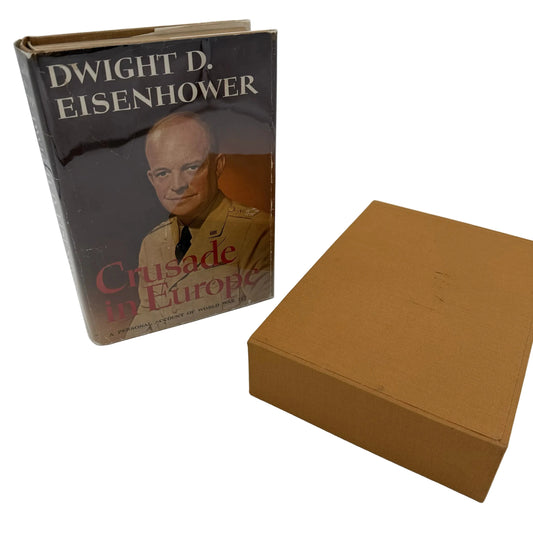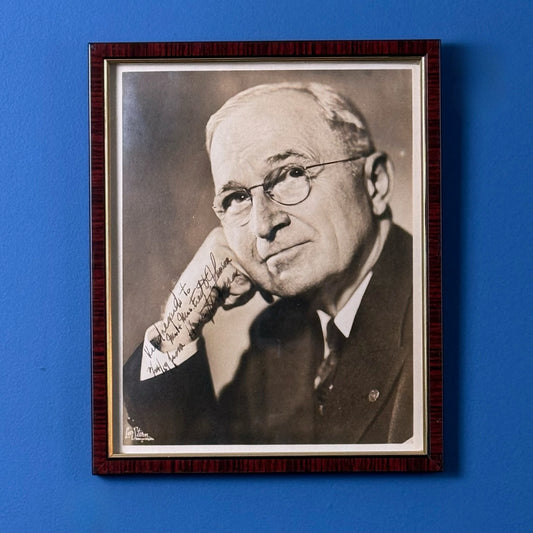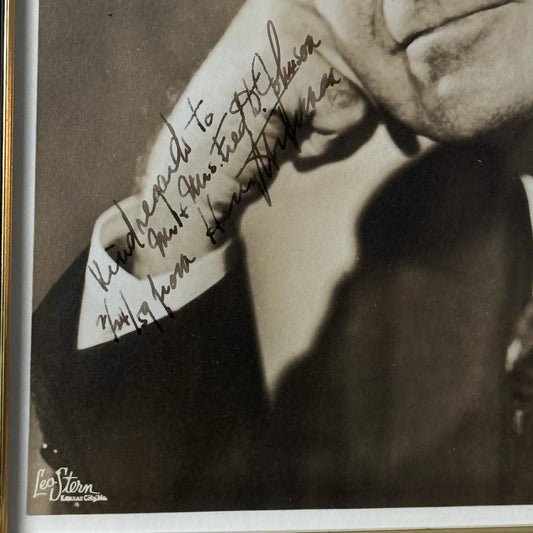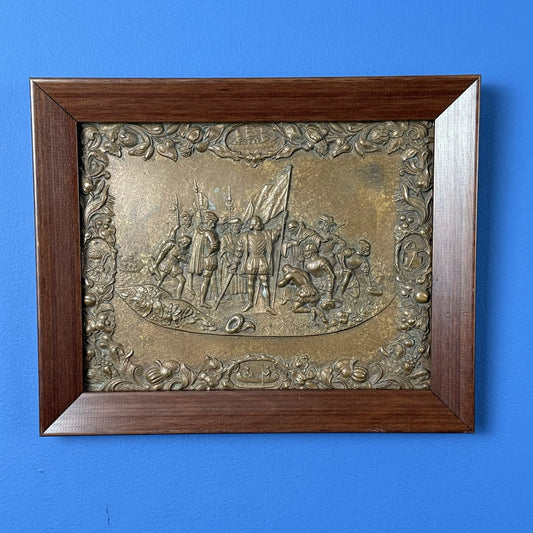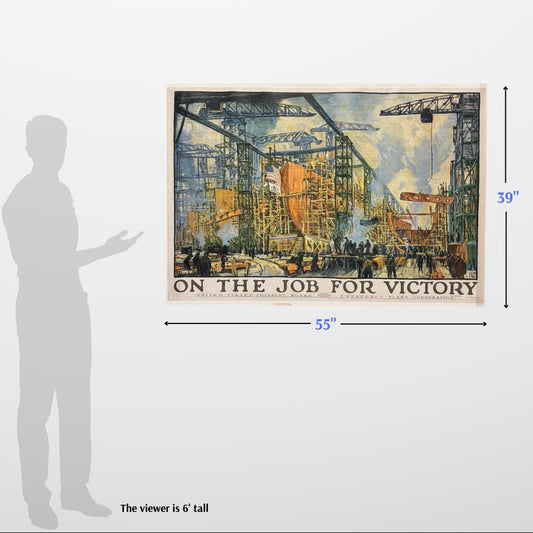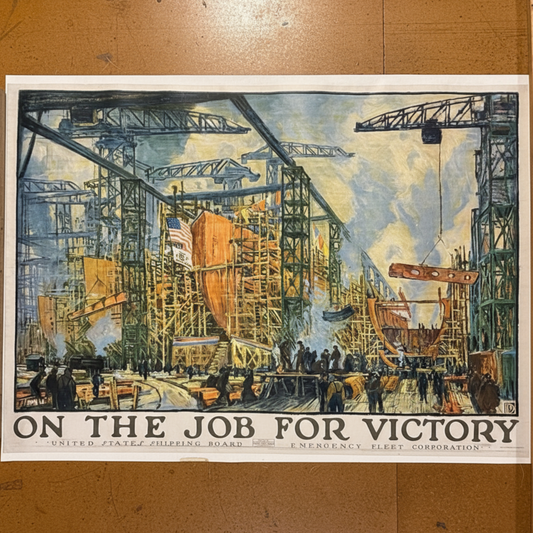Framed 19th Century Restrike of 18th C. Dutch New Yorker's caricature print by William Heath of London
Framed 19th Century Restrike of 18th C. Dutch New Yorker's caricature print by William Heath of London
Updated at 9:15 pm: This has been sold.
19th Century Restrike of 18th Century Dutch New Yorker’s Caricature Print by William Heath of London
From a drawing by William Heath of London.
Originally published in "Knickerbocker's New York" by Washington Irving (1809).
c. 1850
Peter Stuyvesant's Army Entering New Amsterdam.
See Knickerbocker's New York. P. 341.
The following families are represented, with the text that appears with each name:
Van Brummel — First of all came the Van Brummells, the First inventors of Suppawn or Mush and Milk.
Van Kloten — The Van Kilotons of Kaatskill. Horrible quaffers of New Cider.
Van Pelt — The Van Pells, mighty hunters of Minks and Muskrats.
Van Nests — The Van Nests of Kinderhook, Valiant robbers of Birds Nests.
Van Higginbottom — The Van Higginbottoms, armed with ferules and birchen rods; being a race of Schoolmasters.
Van Groll — The Van Rolls, of Anthony's nose.
Gardenier — The Gardeniers, robbers of Water-melons and smokers of Rabbits.
Van Hoesen — The Van Hoesens of Sing-Sing, great choristers & players upon the jews-harp.
Couenhoven — The Covenhovens, a jolly race of publicans.
Van Kortlandt — The Van Kortlandts, great Killers of Ducks &c.
The Van Winkles &c. &c.
Lith. of Sarony & Major at 117 Fulton Street, New York (1845 - 1857).
Historical Background on the Original Painting:
William Heath first rose to prominence for his humorous prints, which he churned out with remarkable speed and distributed widely. Some of his most successful prints were also accompanied by lesser-known oil paintings, as is the case with Peter Stuyvesant's Army Entering New Amsterdam. Published as a print in the 1848 edition of History of New York by Washington Irving and again years later in The New York Times, this image became widely associated with the artist's public image.
Heath's affinity for panoramic narratives quickly became a career trademark. The present work, three times as wide as it is high, is iconic for both its scale and attention to detail within such a large canvas. The sheer size of the composition allows Heath to capture an important moment in American history through witty vignettes and comical figures, which participate in the broader narrative that the artist aims to tell within this painting.
The present work portrays Peter Stuyvesant and his army marching into New Amsterdam (now New York City). Peter Stuyvesant can be identified on the left by his wooden leg, which he acquired following an injury he received during an expedition in Saint Martin. In 1646, Stuyvesant was sworn in as the director general of the Dutch possessions in the Caribbean and North America, including New Amsterdam. His arrival to the city, depicted in the present scene, caused immediate conflict with the local citizens. Over the years, his unwavering affiliation to the Dutch West India Company and tyrannical leadership created further tension and upheaval by the burghers, resulting in New Netherland (now New York State) to fall to the British in 1664. After his defeat, he retreated to his farm, "the Bouwerie," the namesake of the Bowery district in downtown Manhattan.
Heath's humor starts where Peter Stuyvesant's wooden leg ends. The "army" does not present as intimidating, which may explain its unsuccessful command of the city. Instead, there is a bird's nest and a keg held up by their respective sticks. In the front of the brigade are four men who walk in tandem, their legs outstretched in unison. A few rows behind we see boisterous men drinking jugs of liquor. Heath's technique creates the illusion that this cast of characters goes on indefinitely. This comical depiction of Peter Stuyvesant's army is gloriously entertaining to viewers and the epitome of Heath's light-hearted illustration style.
Source: Southeby's
Shipping: $25. Please allow two weeks for shipping.
Made by America
Made by America
Almost all of the new products we offer are designed by us and made in America and most of our Rare Finds were made in America.
Our original designs are based on our nation’s history and our love of American history. Read more about other things we've created, including The History List, History Camp, and The Pursuit of History, in addition to The History List Store.
Every product that is made in America states that in the product description and includes the "Made in U.S.A." graphic.
